Date of Exploration : 30 Mar 2016
This iconic landmark of Japan needs no introduction but ironically, its name is not be very well-known. Before coming here, I didn't know it is called
Fushimi Inari Shrine and only referred to it as "that place with the orange tunnel of wooden pillars and beams". Having seen so many striking photos of it, this shrine has been on my checklist of places to visit for a loooooong time if I ever came to Japan. So tada! ...
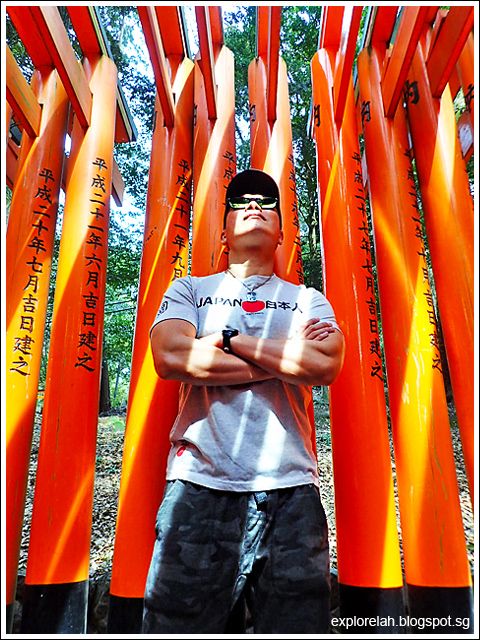 |
| ... I finally walked into the photograph I've seen so many countless people had taken! |
Probably the most recognisable tourism sight and site in Japan after Mount Fuji, this attraction that is made for souvenir photos is a must-see by being as enchanting and fascinating as it is awkward in its fusion with the forested hillside it calls home.
Walking into a Spiritual Vein of Shinto
Established since 711AD, Fushimi Inari Shrine is one of Japan's definitive cultural relic and is the head of all Inari Shinto shrines (some over 40,000 of them) in Japan. "Inari" is the
kami (god) of grain foods such as rice and Sake and is worshipped for its association with good harvest, fertility and prosperity.
As for "Fushimi", it is the name of the location the shrine is at to distinguish it from the many other Inari shrines.
 |
| A giant torii gate marks the entrance path that leads to Fushimi Inari Shrine. |
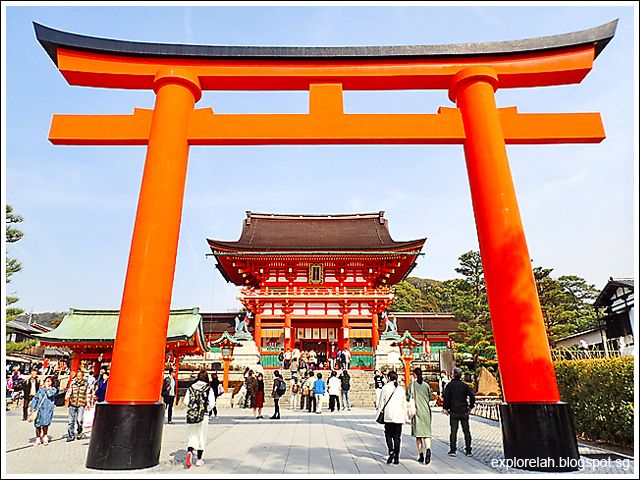 |
| A second torii gate stands guard closer to the shrine's Romon Gate. Behind the Romon Gate is the collection of prayer houses of Fushimi Inari Shrine. |
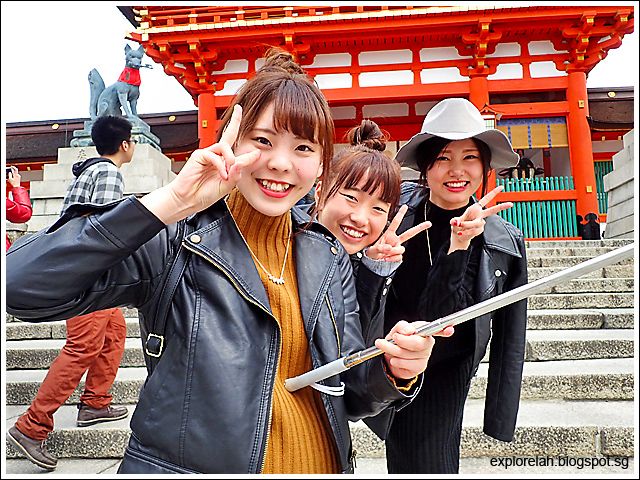 |
| Three cheers! Saw these jovial lovelies taking a wefie and their joy of friendship compelled me to snap a photo of them in the act. But when they saw me framing their moment from a distance, they spontaneously broke into a smile towards me. So I got closer and remembered this warmth that brightened my day. Even though we were strangers. Thank you for the sunshine! :-D |
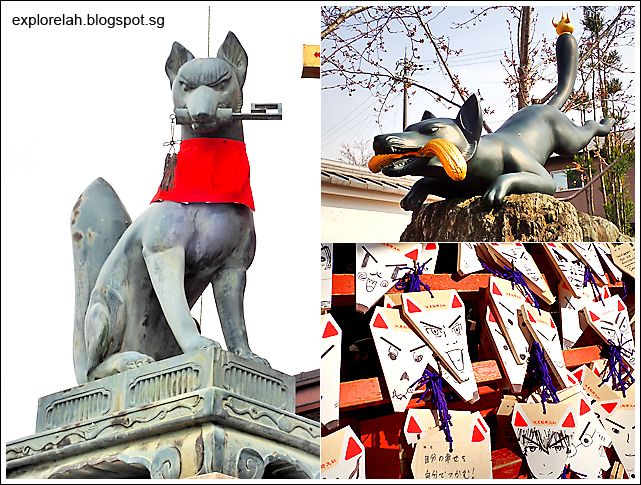 |
| Foxes are considered messengers for Inari. Wherever you find fox komainu (guardian spirits) at the entrance of a holy place, that is a sure sign that that is an Inari shrine. |
 |
| A stage sits in front of the main prayer (honden) and offering (haiden) hall. |
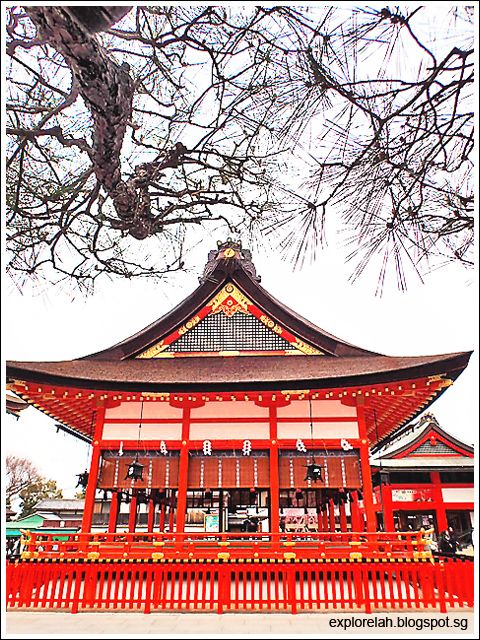 |
| Framing the stage where bugaku dance or noh theatre are performed to honour the gods. Torii gate, purification trough, stage, honden, haiden, ema and omikuji are classical features of Shinto shrines. |
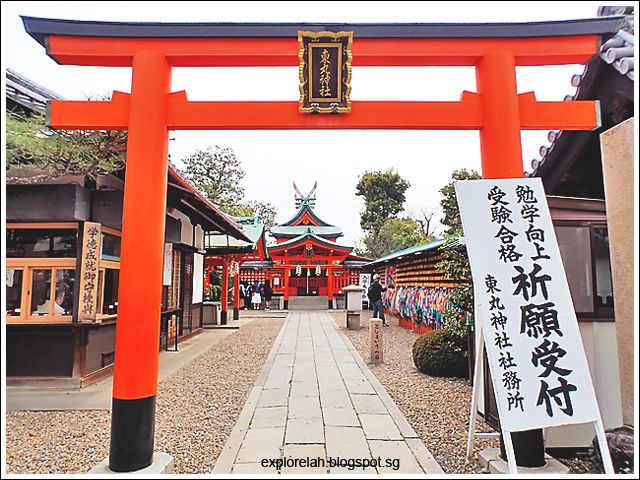 |
| A side shrine within the compound of Fushimi Inari Shrine lined with an ema board where devotees can write their hopes, wishes and prayers on wooden 'cards'. |
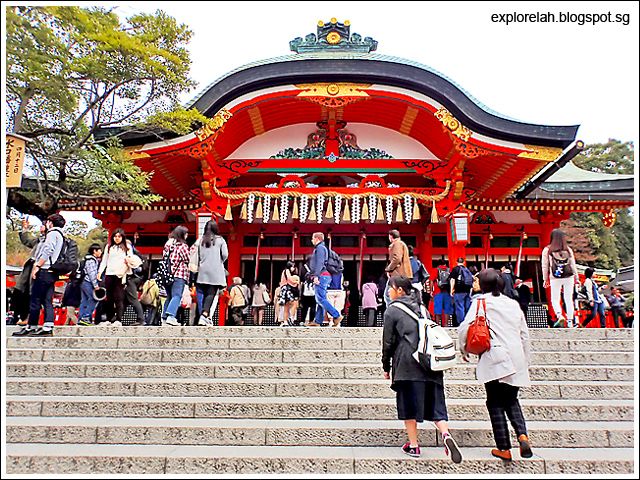 |
| Fushimi Inari Shrine's main honden and haiden hall. |
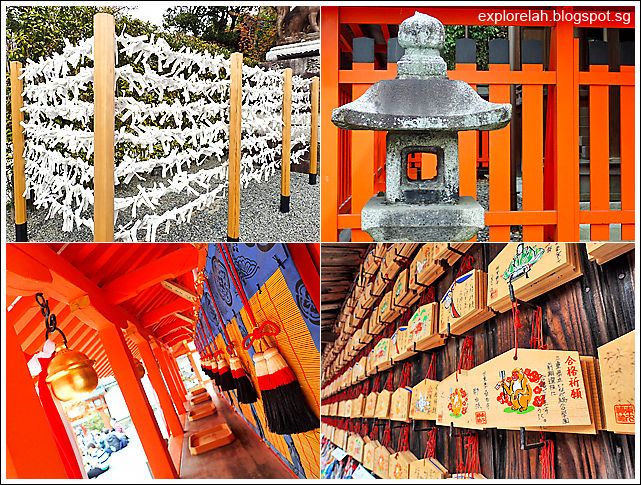 |
| There are many ways to pray and make offerings at a Shinto shrine from tying omikuji (fortune telling paper slips) to make good fortunes come true and bad fortunes go away, to lighting candles and incense, to penning hopes on wooden ema cards. |
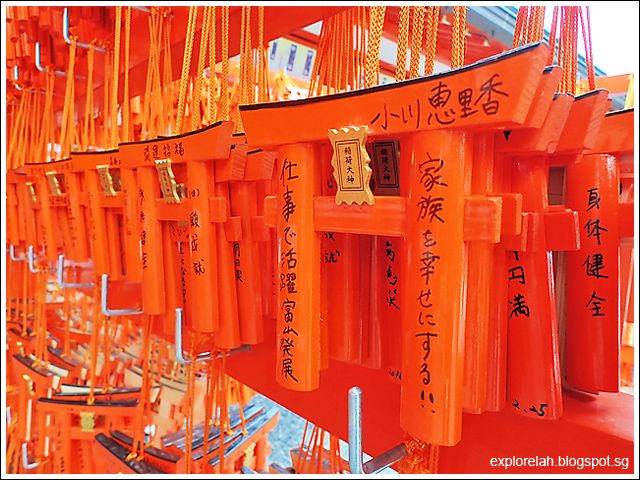 |
| Ema in the shape of mini torii gates where visitors can pen wishes and prayers to be hung on a display rack. |
 |
| Say a prayer and sound the bell to alert the spirits to get to work in realising the wishes. I'm not Buddhist but I was quietly hoping for prolonged good health for the people I love and myself, as well as wisdom and everlasting love when I tugged the ribbon that sounded the bell. I hope my hopes come true :) |
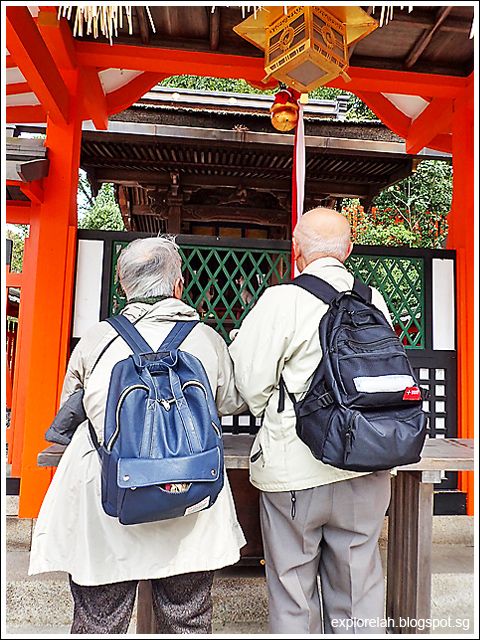 |
| This is what everlasting love looks like... Saw this old couple, white with the remaining hair they had, praying at a shrine. What you don't see is that they were holding each others' hand while saying their prayers. I felt so warm and fuzzy inside and also envious. Meeting that person who is willing to work things out and grow old with you is such a treasure to never let go of. |
 |
| The old couple were praying to this Shinto altar. May whatever they prayed for come into realisation. |
 |
| After passing through the stage, prayer hall and a series of shrines, we arrived at the back of Fushimi Inari Shrine where the real magic begins! This is where we will walk into the famed corridor of minor torii gates lined to closely together, they form an endless crimson tunnel. |
 |
| The corridor of torii gates is adored by many visitors so it is impossible to get a clean shot without people in the background. But if you come in the evening, the number of visitors will be thinner. |
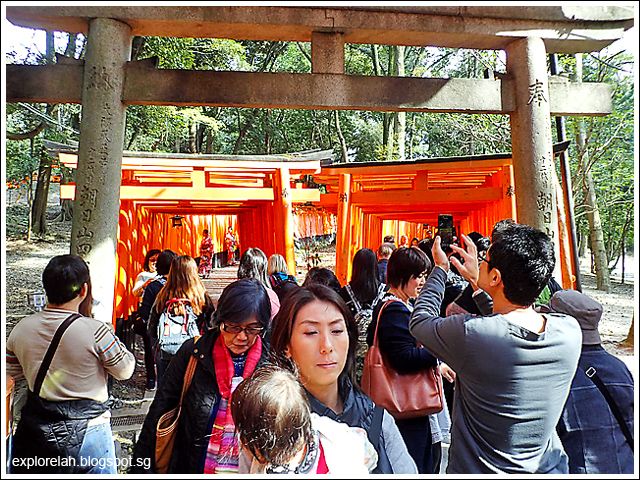 |
The initial line-up of taller torii gates led down a path where it is split into a left and right row of densely packed shorter torii gates. The conventional way is to take the right route and return by the left. The corridor leads up the mountain that Fushimi Inari Shrine sits at the bottom of.
As we were pressed for time, we didn't intend to climb to the top, a journey that will take about 3 hours to go up and come back down so we took the left route to experience what walking into the orange tunnel felt like. |
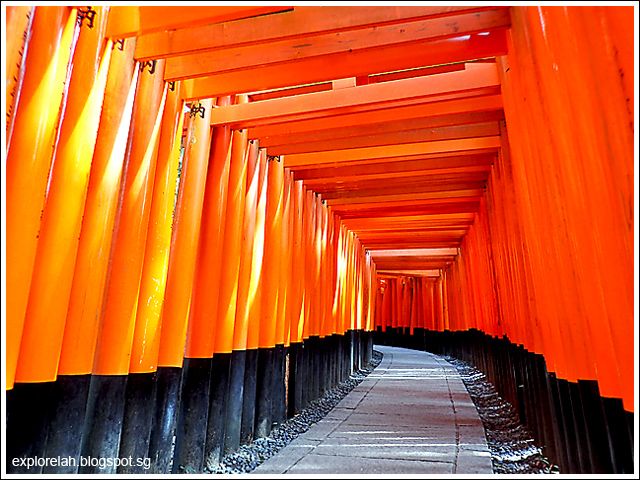 |
Although we went against human traffic, we were freed from the crowd and managed to experience the meditative allure of the torii tunnel without people. It felt mysterious because you can't see beyond a turn and yet awed at the same time of the sheer number of these wooden pillars and beams.
At one point, I imagined the tunnel to be the blood veins that fed Inari. |
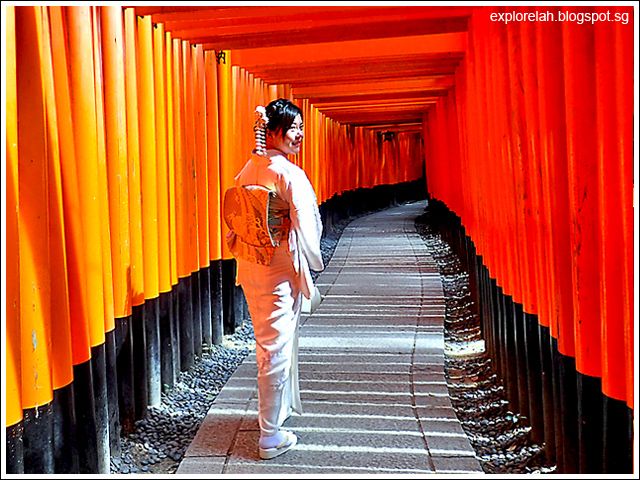 |
| A very popular thing to do is to rent a traditional Japanese kimono or costume in downtown Kyoto and pretend to step back in time in Japan at Fushimi Inari Shrine. |
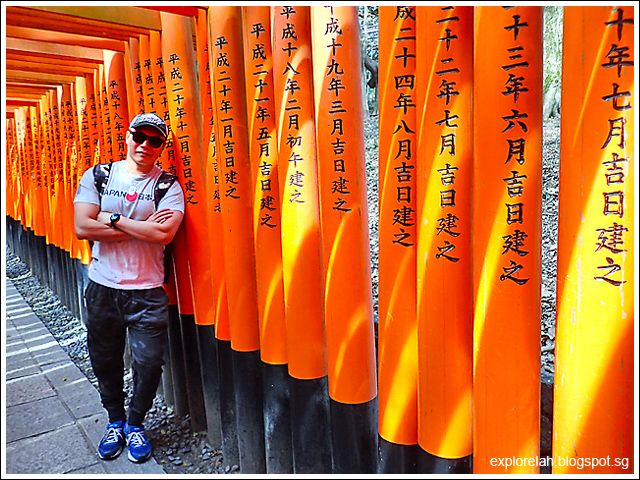 |
| The torii corridor cocooned us from the forest outside. |
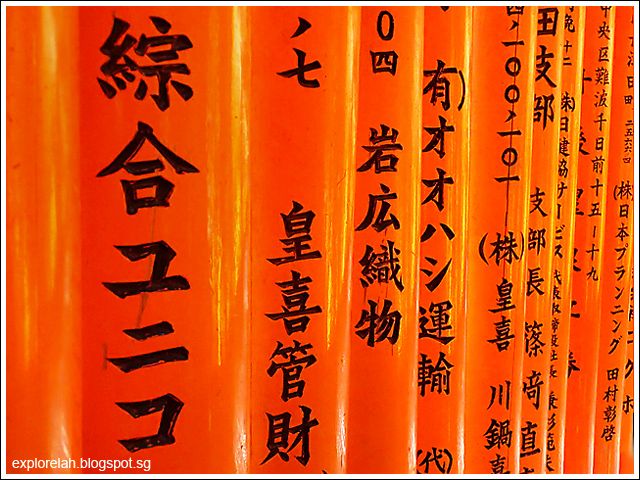 |
| The torii gates were donated by individuals as well as corporations as homage to the gods for prayers for prosperity that were realised. There are about 10,000 of these torii gates that formed snaking trails up Mount Inari. If you are thinking of donating and inscribing a torii gate of your own, it costs about ¥400,000 (S$5,300) for a small gate and ¥1 million (S$13,200) for a big gate. |
 |
A leap of victory for finally coming to this place that I've wanted to visit for so long! And getting here was much easier than I thought. It's just a short 5 minutes train ride on the Japan Rail line from Kyoto Station to Inari Station.
This is definitely a place like no other to visit when in Japan! |
|
Related Post :
Tofukuji Temple - The Home of Zen






















No comments:
Post a Comment